Workouts
The latest Workouts breaking news, comment, reviews and features from the experts at T3
-

This four-move dumbbell workout boosts full-body strength and fitness in 30 minutes
Strengthen your entire body, build muscle endurance and improve your aerobic capacity
By Bryony Firth-Bernard Published
-
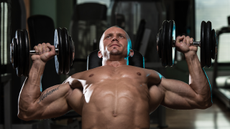
A top fitness coach shares his 30 minute chest and back workout for building muscle
No need to spend hours in the gym, as Jeff Cavaliere explains with his latest ‘X-press’ workout
By Bryony Firth-Bernard Published
-

A fitness expert shares three bodyweight exercises to ‘life-proof’ your knees
Stronger knees equals better movement and less pain, what’s not to love?
By Bryony Firth-Bernard Published
-

Skip the gym – a Pilates instructor shares a six-move full-body workout to build strength all over
You just need a light pair of dumbbells, or water bottles
By Bryony Firth-Bernard Published
-
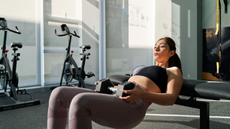
You only need a dumbbell and these six exercises to build stronger legs and glutes
Aren't up to leaving the house to hit the gym? We've got you
By Bryony Firth-Bernard Published
-

Best elliptical trainer 2025 for a joint-friendly full-body workout at home
The best elliptical trainers for limb-twitching, cardio-pumping workouts at home
By Bryony Firth-Bernard Last updated
-
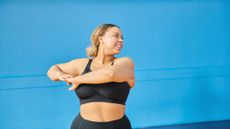
A stretchologist says these three moves performed daily will transform your posture
They'll take you no more than 10 minutes
By Bryony Firth-Bernard Published
-

Boost your metabolism and build total body strength with this five-move dumbbell workout
This 25-minute EMOM workout will leave your heart racing and muscles pumped
By Bryony Firth-Bernard Published
-

A mobility expert shares four bodyweight exercises to unlock stiff, achy hips
Just 15 minutes is all you need to make your hips happy again
By Bryony Firth-Bernard Published
-

Build stronger, healthier knees to run pain-free with this 4-move dumbbell workout
Run more comfortably and confidently
By Bryony Firth-Bernard Published
-
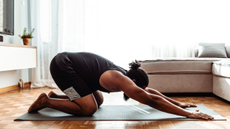
A top trainer shares a 6-minute workout to help boost full-body mobility and strengthen your joints
Start your day off, or your workout, with these six exercises to improve your movement and mood
By Bryony Firth-Bernard Published
-
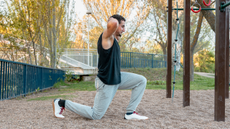
This three-move bodyweight workout builds full-body strength and burns lots of calories
If life's got hectic and you need a quick full-body workout to keep you ticking over, this is it
By Bryony Firth-Bernard Published
-

A top trainer shares a 10-minute ab workout to strengthen your midsection muscles
Kayla Itsines reveals how to strengthen your abdominal muscles when you're short on time
By Bryony Firth-Bernard Published
-
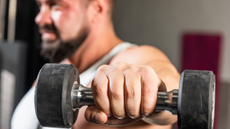
Three exercises to ‘life-proof’ your shoulders, according to a fitness expert
Healthy shoulders lead to better movement and bigger lifts
By Bryony Firth-Bernard Published
-
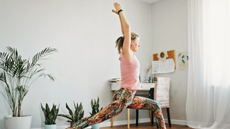
A Pilates expert says these 7 standing exercises build core strength, balance and stability
If you struggle with mat Pilates, this low-impact standing routine will be perfect for you
By Bryony Firth-Bernard Published
-

Two dumbbells, five exercises and 24 minutes to add size and strength to your upper body
Here’s an upper body workout you can easily squeeze in around the festive season
By Bryony Firth-Bernard Published
-

Chris Hemsworth shares a core exercise he’s been doing – and it’s not what you think
It also strengthens the shoulders and hips too
By Bryony Firth-Bernard Published
-
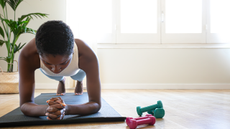
Five minutes and this bodyweight workout is all you need to improve your deep core strength
Do this workout three to four times a week for a more resilient body
By Bryony Firth-Bernard Published
-

A top personal trainer shares a dumbbell-only workout that can help you get fit and strong at home
And it'll only take you 25 minutes
By Bryony Firth-Bernard Published
-
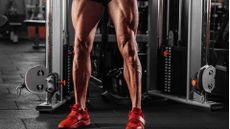
An exercise scientist says these two 10-minute workouts build stronger legs, fast
Dr. Milo Wolf says you can forget about high-volume sessions and your standard 'three sets'
By Bryony Firth-Bernard Published
-

A professional ultra runner says these are the 3 exercises that made her a faster runner
"Speed isn't just built on the track"
By Bryony Firth-Bernard Published
-
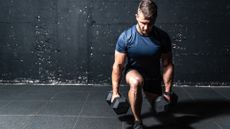
Arnold Schwarzenegger's four-move dumbbell workout builds a stronger body in 25 minutes
A workout that you can squeeze into your busy schedule
By Bryony Firth-Bernard Published
-
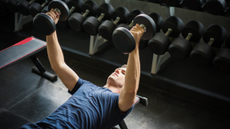
Two dumbbells, a bench and these four exercises to add strength and muscle to your entire body
This workout from a top fitness coach keeps things simple
By Bryony Firth-Bernard Published
-
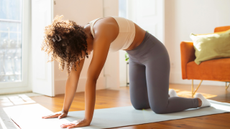
A mobility expert says these three bodyweight exercises can help undo that nagging pain in one side of your lower back
And they’ll take you just under 10 minutes
By Bryony Firth-Bernard Published
-

A top personal trainer says this Pilates workout works every muscle in the best way possible
Work your core, lower body and upper body muscles with this bodyweight Pilates session
By Bryony Firth-Bernard Published
-

Want to run faster? A running coach recommends these 3 exercises for more speed
Add these three exercises to the end of your leg day or after your runs
By Bryony Firth-Bernard Published
-

Build muscle and save time with this 40-minute antagonistic superset workout
You can still make gains with minimal time
By Bryony Firth-Bernard Published
-

David Beckham’s personal trainer shares a 30-minute strength workout for time-restricted parents
Build strength and muscle sharpish with this dumbbell workout
By Bryony Firth-Bernard Published
-

A mobility expert shares three exercises to boost movement longevity
Just your bodyweight and 10 minutes is all you need
By Bryony Firth-Bernard Published
